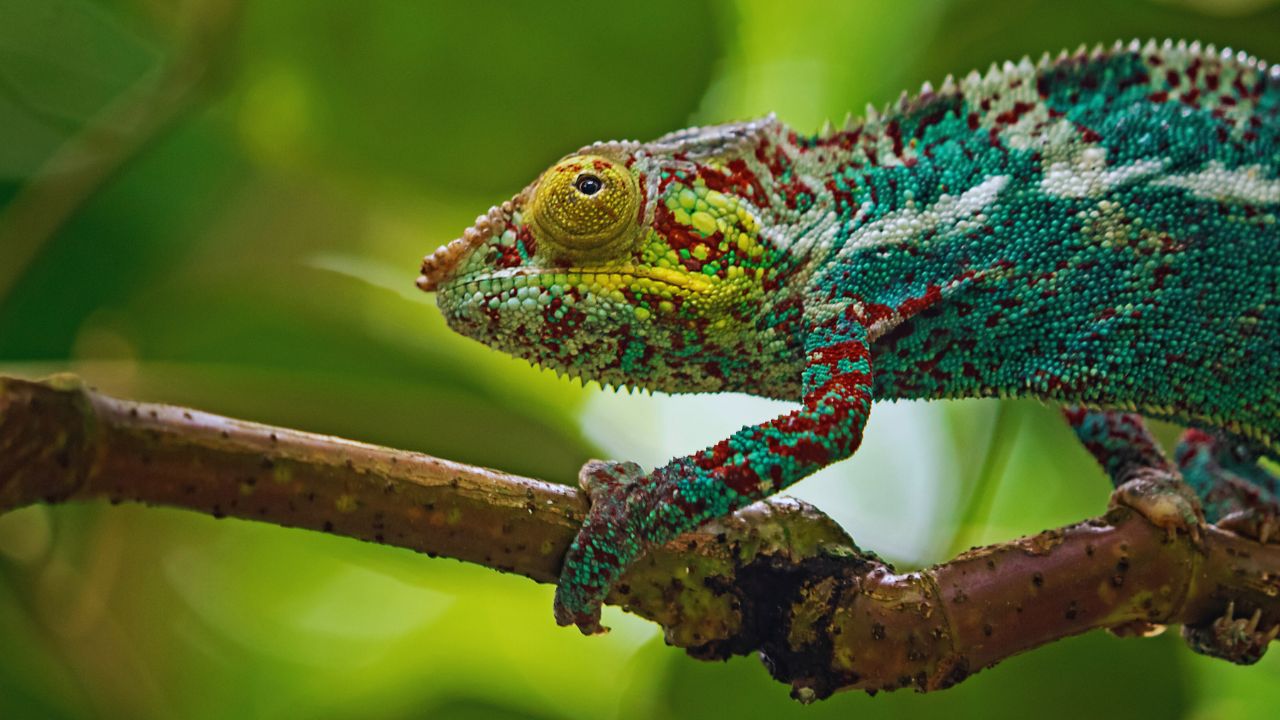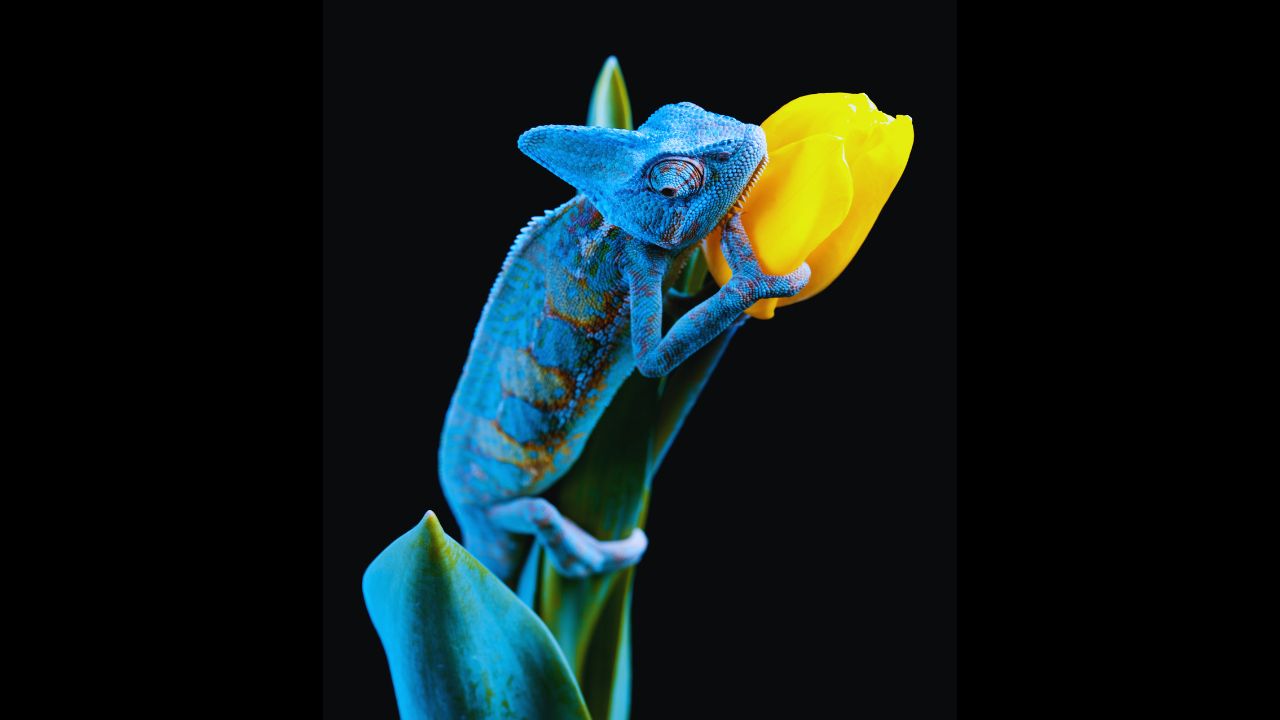10 Most Affordable Chameleons for Pet Enthusiasts
Reptile lovers often choose chameleons because of their captivating color-changing abilities and eye-catching looks. But taking good care of these unusual reptiles may be costly and difficult at times. The initial setup of a chameleon’s home, which may be up to $700, and continued care and upkeep need a substantial commitment from a pet owner. However, if their habitat is formed, their major duties are to provide enough UVA light, maintain nutritious food, and provide the right environmental conditions.

Species and Unique Characteristics
| Species | Unique Characteristics |
|---|---|
| Desert Side-Striped Chameleon | Mountain-dwelling gives birth to live young |
| Rudis Chameleon | Bright green and yellow coloration |
| Flap-Necked Chameleon | Lower price, challenging care |
| Veiled Chameleon | Suitable for beginners, hardy |
| Werner’s Three-Horned Chameleon | Smaller-sized, robust species |
| Carpet Chameleon | Intricate patterns, highly sensitive to stress |
| Jackson’s Chameleon | Three horns, lemon-lime green color |
| Cameroon Two-Horned Chameleon | A distinct appearance requires calcium and vitamin A |
| Pygmy Chameleons | Small-sized, wild-caught individuals may have health issues |
The 10 most reasonably priced chameleon species are listed here for individuals who would like to own these fascinating animals without going over budget.
1. Pygmy Chameleons (Brookesia spp.): $150-$300
The greatest length of a pygmy chameleon is often around eight inches. These chameleons are indigenous to Madagascar, an island renowned for its wide variety of chameleon species, and are members of the Brookesia genus. Potential owners should proceed with care, nevertheless, since the majority of pygmy chameleons on the market are wild captures rather than captive-bred animals. Wild-caught animals are better suited for seasoned keepers since they often have health- and stress-related problems.
2. Cameroon Two-Horned Chameleon (Chamaeleo cristatus): $60-$120
The Cameroon two-horned chameleon, also called the sailfin chameleon, is indigenous to the country’s mountainous woodlands. This species is well-known for its unusual look and demanding maintenance needs. These chameleons have a ten-year lifespan if given the right care. Adding supplements to their diet, such as calcium and vitamin A, is frequently necessary to ensure their health. Their habitat should have enough of vertical room and excellent ventilation, just like any other chameleon’s.

3. Jackson’s Chameleon (Chamaeleo jacksonii): $100–$175
Native to Tanzania and Kenya’s highlands, Jackson’s chameleons prefer temperate climates with high relative humidity. Men One subspecies of Jackson’s chameleons stands out in particular thanks to its three characteristic horns, golden spikes running down their backs, and lemon-lime green coloring. Chameleon aficionados like them for their distinctive look and affordable pricing.
4. Carpet Chameleon (Chamaeleo lateralis): $150-$500
The moniker “carpet chameleon” comes from the bright, complex patterns that resemble Oriental rugs. These chameleons are very sensitive to stress, so expert keepers are the best fit for them, despite their stunning appearance. They would rather be left alone and dislike being touched. Given their sensitivity and the level of care needed to maintain their health, carpet chameleons may range widely in price.

5. Werner’s Three-Horned Chameleon (Trioceros werneri): $70-$100
A robust species, the Werner’s three-horned chameleon resembles a smaller, stockier Jackson’s chameleon. Because they are more resilient than other species, these chameleons are a more cost-effective choice for chameleon enthusiasts. Since they are smaller, their cages may be somewhat smaller, but giving the animal enough of room is always best for their welfare.
6. Panther Chameleon (Furcifer pardalis): $65-$500
Among the most common chameleon species kept as pets are panther, veiled, and Jackson’s chameleons. They are renowned for their vivid hue and patterns and are rather cheap to buy and care for. Panther chameleons, however, are vulnerable to metabolic bone disease, an avoidable ailment that, if left untreated, may result in severe abnormalities.

7. Veiled Chameleon (Chamaeleo calyptratus): $50-$250
Because of their identifiable look and reasonably robust nature, veiled chameleons are often suggested for novices. Though they still need close attention, veiled chameleons, which are native to Yemen and Saudi Arabia, are among the chameleon species that are easiest to maintain. They are a popular option for inexperienced reptile keepers because to their low cost and simplicity of maintenance.
8. Flap-Necked Chameleon (Chamaeleo dilapsis): $50-$150
Although they need more care than other species, flap-necked chameleons are still an inexpensive choice. Despite this, their cheaper price point keeps them a popular option. Flap-necked chameleons may survive and even flourish in captivity with the proper care and attention.
9. Rudis Chameleon (Trioceros rudis): $45-$90
Rudis chameleons are tiny yet colorful; they usually reach a length of eight inches. These chameleons are prized for their affordable price and vivid green and yellow coloring. They may be prevented with the right care, but like other chameleons, they are susceptible to conditions including vitamin A deficiency and metabolic bone disease.

10. Desert Side-Striped Chameleon (Trioceros bitaeniatus): $40 and up
Another species of chameleon that lives in mountains and gives birth to live young is the desert side-striped chameleon. The desert side-striped chameleon is an inexpensive choice for anybody wishing to add a chameleon to their collection, even though reproducing chameleons is often difficult and requires certain circumstances. They need the same kind of care as other chameleon species to be healthy, although they are less expensive.
Most Affordable Chameleons
| Species | Average Price Range |
|---|---|
| Desert Side-Striped Chameleon (Trioceros bitaeniatus) | $40-$100 |
| Rudis Chameleon (Trioceros rudis) | $45-$90 |
| Flap-Necked Chameleon (Chamaeleo dilapsis) | $50-$150 |
| Veiled Chameleon (Chamaeleo calyptratus) | $50-$250 |
| Werner’s Three-Horned Chameleon (Trioceros werneri) | $70-$100 |
| Carpet Chameleon (Chamaeleo lateralis) | $150-$500 |
| Jackson’s Chameleon (Chamaeleo jacksonii) | $100-$175 |
| Cameroon Two-Horned Chameleon (Chamaeleo cristatus) | $60-$120 |
| Pygmy Chameleons (Brookesia spp.) | $150-$300 |
Frequently asked questions (FAQ)
1. What are the preliminary charges concerned in putting in place a habitat for a chameleon?
Answer:
Setting up a habitat for a chameleon can be pretty pricey. The preliminary setup, which include a appropriate enclosure, heating and lighting fixtures equipment, substrates, vegetation, and different necessary add-ons, can range from $four hundred to $700. This setup guarantees that the chameleon has an environment that mimics its natural habitat, that’s vital for its fitness and well-being.
2. Are there precise chameleon species which can be better acceptable for beginners?
Answer:
Yes, some chameleon species are more appropriate for beginners due to their pretty hardy nature and ease of care. The Veiled Chameleon (Chamaeleo calyptratus) and Jackson’s Chameleon (Chamaeleo jacksonii) are famous choices for beginner keepers. They are less sensitive to pressure and environmental modifications in comparison to different species, making them greater doable for the ones new to chameleon care.
3. What are the commonplace health problems confronted by chameleons, and how can they be avoided?
Answer:
Chameleons are susceptible to numerous health troubles, consisting of metabolic bone sickness (MBD), diet A deficiency, and dehydration. MBD is a preventable but debilitating circumstance caused by inadequate calcium and UVB light, main to severe deformities. Ensuring a balanced weight loss program, offering suitable UVB lights, and normal supplementation with calcium and nutrients can assist save you these health problems. Regular veterinary test-usaare also encouraged to preserve the fitness of your chameleon.
4. Are there any affordable chameleon species that give start to live young?
Answer:
Yes, the Rudis Chameleon (Trioceros rudis) and the Desert Side-Striped Chameleon (Trioceros bitaeniatus) are species that provide delivery to stay younger as opposed to laying eggs. These chameleons are fairly less expensive and have precise reproductive techniques. However, breeding chameleons may be hard and requires precise situations to make certain the health of each the mother and the offspring.
5. Why are wild-stuck chameleons commonly not endorsed for beginners?
Answer:
Wild-caught chameleons are not advocated for novices because they frequently face fitness and stress issues that can be difficult to manage. These chameleons may also have parasites, injuries, or different conditions from being captured and transported. Additionally, they are more vulnerable to stress in captivity, that could lead to health issues. Captive-bred chameleons are generally healthier and greater familiar with living in a controlled surroundings, making them a better preference for less skilled keepers.





